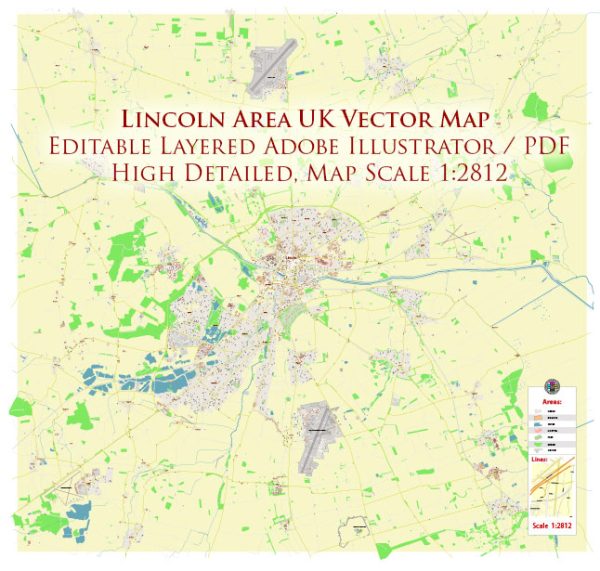Lincoln, located in the East Midlands region of England, has a rich history of urban development that dates back to Roman times. The city is perhaps best known for its impressive cathedral and medieval castle, but its urban development has been shaped by various historical and cultural influences.
- Roman Influence (1st Century AD): The Romans founded the city of Lindum Colonia around AD 50, and it became an important administrative and military center. The layout of the Roman city is believed to have included a forum, basilica, and other typical Roman structures. The Fosse Way, a Roman road, passed through Lincoln, further enhancing its strategic importance.
- Medieval Period (11th – 15th Century): The medieval period saw significant development in Lincoln. The construction of Lincoln Cathedral began in 1088 and continued over several centuries, making it one of the finest examples of Gothic architecture in Europe. The castle, situated on a steep hill overlooking the city, was also constructed during this period, and both structures played a crucial role in shaping the city’s identity.
- Economic Growth and Trade (Medieval to Early Modern Period): Lincoln thrived as a market town during the medieval and early modern periods. Its strategic location made it a hub for trade and commerce, contributing to the growth of the city. The medieval street plan, with its narrow, winding roads, reflects the organic development of the city during this time.
- Industrial Revolution (18th – 19th Century): Like many other cities in the United Kingdom, Lincoln experienced significant changes during the Industrial Revolution. The growth of industry led to the expansion of the city, with the development of factories and housing for the increasing population. The Brayford Pool, a natural lake in the city, played a role in supporting industrial activities and trade.
- Transportation Development (19th Century): The 19th century saw improvements in transportation infrastructure, including the arrival of the railway in 1846. The railway facilitated the movement of goods and people, further connecting Lincoln with other parts of the country.
- 20th Century and Beyond: In the 20th century, Lincoln continued to evolve as an industrial and commercial center. The city faced challenges during World War II, with bomb damage affecting some areas. After the war, there were efforts to rebuild and modernize. In recent decades, urban redevelopment projects have aimed to enhance the city’s infrastructure, preserve its historic character, and accommodate modern needs.
Today, Lincoln stands as a city that seamlessly blends its rich history with contemporary developments. The historic cathedral and castle coexist with modern amenities, and the city continues to grow and adapt while preserving its cultural heritage.


 Author: Kirill Shrayber, Ph.D.
Author: Kirill Shrayber, Ph.D.